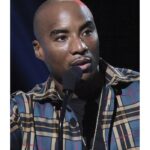Bret Taylor has been involved with some of the tech industry’s most notable innovations—from Google Maps to Facebook’s FB -0.33% “like” button—and founded companies that sold for hundreds of millions of dollars.
But until recently, the 41-year-old Oakland, Calif., native was largely unknown outside Silicon Valley. Then, within a couple of days at the end of last month, Mr. Taylor was named to help run two of tech’s most prominent companies, as board chairman of Twitter Inc. and co-chief executive of Salesforce.com Inc. CRM -0.08%
“It was an unusual week in my life,” Mr. Taylor said in an interview.
The promotions catapult the engineer-by-training into the spotlight as one of Silicon Valley’s highest-profile executives, and leave him bridging companies on opposite ends of the tech spectrum: Twitter caters to buzz-hungry internet scrollers. Salesforce’s CRM -0.08% core software helps corporate sales teams manage their customers.
Mr. Taylor said the roles complement each other: Tracking consumer technology for Twitter helps him innovate in enterprise software because many of those same trends affect Salesforce’s corporate customers as well, he said.
“Day-to-day, though, they obviously exist in two really different worlds,” he said.
He faces challenges in both. Salesforce, which he joined in 2016 and where he previously was president and chief operating officer, has benefited from the pandemic-era cloud-computing boom, but its stock is down over the past month. Its latest quarterly outlook disappointed investors as the company’s profit estimate for this quarter was less than what analysts had been expecting.
His entrepreneurial pedigree, technical chops and product experience have endeared him to Salesforce co-founder and Chairman Marc Benioff, who called Mr. Taylor a “phenomenal industry leader” and a trusted friend when announcing him as his co-CEO. The two get along well, people who have watched them work together say, partly because they share a background in starting their own companies.
Salesforce, though, has tried the co-CEO approach before, and it ended quickly. In 2018, Keith Block was promoted to co-CEO alongside Mr. Benioff after five years as president and COO. He left 18 months later, saying he was moving on to the “next chapter.”
At Twitter, Mr. Taylor will be focused on helping the new CEO, Parag Agrawal —who succeeded co-founder Jack Dorsey the same day Mr. Taylor was elevated to chairman—try to realize ambitious growth goals. In February, Twitter announced targets to reach 315 million daily users and $7.5 billion annual revenue in the next two years. Twitter could end 2021 with around 218 million daily users and about $5 billion in annual revenue, according to analysts surveyed by FactSet.
The 15-year-old company has trailed the growth of rivals, especially Facebook, which has a user base about 10 times as large across its family of apps. Twitter has experimented with new features and products with mixed success. Its shares have fallen more than 20% this year, while the Nasdaq Composite Index has gained more than 17%.
Mr. Taylor said his main focus at Twitter is working with Mr. Agrawal, whom he has known since 2016 when he joined the board, and making sure Mr. Agrawal succeeds in the new role. Messrs. Dorsey and Agrawal praised Mr. Taylor’s leadership and technical chops.
“He understands entrepreneurship, taking risks, companies at massive scale, technology, product, and he’s an engineer,” Mr. Dorsey said in a letter to Twitter employees.
Mr. Taylor’s two current employers have a history together: In late 2016, Mr. Benioff tried to engineer a Salesforce acquisition of Twitter. Mr. Taylor had joined Twitter’s board shortly before Salesforce bought Quip, a workplace-focused document collaboration startup Mr. Taylor had cofounded, for about $582 million. With a foot in both camps, Mr. Taylor says he recused himself from the Salesforce discussions over Twitter. Mr. Benioff abandoned the pursuit after shareholder pushback.
More recently, Mr. Benioff has been vocal in criticizing social-media companies and their leaders over misinformation and other harms. He has likened Facebook to cigarettes. Mr. Taylor said his own views on social media have changed since leaving Facebook.
“Marc has a lot of personal opinions he expresses, not all of which I share,” Mr. Taylor said. Broadly, Mr. Taylor said he believes in how the platforms promote public discussion. “It doesn’t come without risks. I think it’s a really important conversation for society to have: How do we get the benefits of this public conversation without some of the negative ramifications?”
Mr. Taylor has worked at several of the biggest tech companies at important moments. At Google in the early 2000s, he was product manager for Google Maps, one of the company’s first big successes beyond search. He and three colleagues left to form FriendFeed, a startup that aggregated updates, posts and other snippets from other social-media platforms to create personalized feeds. Facebook acquired it in 2009, in part to hire Mr. Taylor and his co-founders, a person familiar with the deal said. FriendFeed had invented a “like” button, which Facebook added to its service.
At Facebook, where he became chief technology officer, Mr. Taylor spearheaded an initiative that let external developers connect their tools and products to Facebook. With minimal oversight, the decision to provide data access to outsiders eventually led to data-sharing scandals after he left, including Cambridge Analytica.
Mr. Taylor said he was motivated by concerns that users might want to export their data, and that Facebook had created a “walled garden” around its access to user information. It was a different time, when the No. 1 thing many people did on Facebook was Farmville, a virtual farm game, he said.
“The broader implications of these networks—I don’t think we fully understood, I don’t think anyone fully understood at the time,” Mr. Taylor said. Mr. Taylor left Facebook in 2012 to start Quip.

Facebook’s ‘like’ button emerged after the tech giant bought FriendFeed, a startup Bret Taylor had co-founded that had invented its own ‘like’ icon.
Photo: josh edelson/Agence France-Presse/Getty Images
Mr. Taylor’s life is woven into the fabric of the tech industry. He was born in Oakland and was raised in the East Bay where he went to public schools. One of his first gigs was in tech: helping local businesses build websites.
Mr. Taylor received both his bachelor’s and master’s degrees in computer science from Stanford University. Both of his parents also went to Stanford. He remains a devoted fan of the school’s football team. He still lives in the East Bay with his wife and three children. He says he enjoys cooking for his family, with his favorite dish being pasta Bolognese.
People who have worked with Mr. Taylor say his ability to blend engineering sensibility with strong business sense has helped him succeed. “Bret can get into the weeds with technical products, and his understanding of software gives him a huge edge as a product person and a business person,” said Avichal Garg, a former colleague of Mr. Taylor’s at Google and Facebook and co-founder of Electric Capital, a cryptocurrency-focused venture firm.
Mr. Taylor still takes time to write code. When wildfires hit the West Coast and air quality was suffering, Mr. Taylor wrote his own iPhone app to put air quality readings on a map.
At Salesforce, Mr. Taylor quickly rose as one of the more technical senior leaders in a company whose culture is defined by sales and that former employees said has struggled to maintain technical talent.
Ashwini Zenooz, Salesforce’s chief medical officer until earlier this year, said Mr. Taylor would take the time to listen to what customers need in a complicated area like healthcare. “He was able to connect the dots,” said Dr. Zenooz, who remembers Mr. Taylor getting off the phone with an insurance executive, then quickly using what he had just learned to help a healthcare executive on a following call.
Mr. Taylor has been a force behind Salesforce’s “Customer 360” strategy to integrate its various applications. And he was the architect of last year’s $27.7 billion purchase of workplace-collaboration company Slack Technologies, Salesforce’s biggest acquisition ever.
Mr. Taylor’s ability to multitask may determine his future. Mr. Dorsey, who split his time with his other company, Square, faced the ire of investors who had hoped he would focus on a single role.
Mr. Taylor foresees no such issue for himself. “I feel very comfortable with the time commitments and knew what I was getting into,” he said.
Write to Aaron Tilley at [email protected] and Georgia Wells at [email protected]
Copyright ©2021 Dow Jones & Company, Inc. All Rights Reserved. 87990cbe856818d5eddac44c7b1cdeb8








